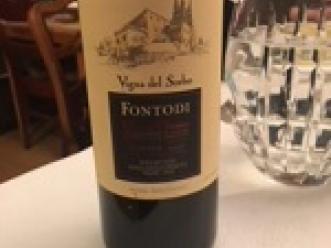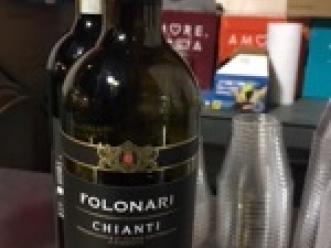Some of the great wines in Italy, and the world, hail from Tuscany. Other articles have discussed Super Tuscans, and some of the great wines based on the Sangiovese grape including Chianti and Brunello di Montalcino. In this article, another great Sangiovese based wine is explored: Vin Nobile di Montepulciano.
The name of this wine can be confusing. Long ago these wines became the chosen wine of nobility hence the Nobile part of the name.
The last part of the name is because the grapes are from the vineyards surrounding the city of Montepulciano just to the east of Montalcino. This city, however, has nothing to do the Montepulciano grape used in Montepulciano d’Abruzzo and other fine wines from the south of Italy. Hence, the name means simply the Wine of Nobility from Montepulciano.
Wine has been made in the area for centuries. Even before the Romans, the Etruscan’s produced wine here. Sixteenth and seventeenth century poets wrote often about these wines. Modern wine production got its start in the 1930’s with the founding of a few wineries still making wine today. Once recognized as a DOC in 1966, Vin Nobile di Montepulciano, like Chianti, saw an increase in the production of mediocre wines. Unlike Chianti, however, Vin Nobile di Montepulciano never became trendy in the contemporary marketplace. Perhaps Vin Nobile di Montepulciano simply relied on its own reputation for too long. While, historically, Vin Nobile di Montepulciano was seen as the better wine of Chianti and Brunello, by the 1970’s the wines lacked much and market share was lost. In the 1980’s two quality oriented producers, Avignonesi and Poliziano, moved to the forefront. They had the financial wherewithal to produce quality wines and bring them to market. With those producers leading the way, the 80’s and especially the 90’s saw a resurgence in Vin Nobile. In 1980 Vin Nobile di Montepulciano was elevated to full DOCG status.
Vin Nobile di Montepulciano is made from a clone of the Sangiovese grape named Prugnolo Gentile, the same strain as used in Brunello. Under DOCG law, it must contain at least 70% Sangiovese. In addition, up to 20% can be Canaiolo Nero and up to another 20% may be other authorized grapes (often the Mamalo grape). The other authorized grapes may include up to 50% of sanctioned white grapes. The wines must be aged for 26 months before being released, the Riservas for 35 months. Vin Nobile di Montepulciano is smaller in size than Chianti or Brunello with about 2,500 acres under vine.
Stylistically, Vin Nobile di Montepulciano is closer to Chianti than Brunello. From the best producers, it can be very good and age worthy. Perhaps they are friendlier than Chianti due to generally less acidity. Certainly, they are less tannic than Brunello. These are wines that in their youth have wonderful cherry flavors with good acidity. The wines also show touches of leather, tea leaves and spice. They can be moderately tannic in their youth. With age, they develop complexities. The cherry fruit becomes more dried and the forest floor qualities take on an interesting layering.
One of the problems in choosing a Vin Nobile di Montepulciano is that there is so much inconsistency between producers. The leading producers have adopted the modern quality methods of reduced yields, small oak barrels, and modern winemaking techniques. These producers are fine tuning their “recipe” and they avoid the use of white grapes. Yet many others are more interested in capitalizing on the centuries old reputation. Those producers make limp shells of wines that lack character. It really pays to try before you buy or take the recommendations from trusted sources.
Avignonesi is still one of the leading producers in Montepulciano. While, they are perhaps better respected for their Vin Santos, they make a quality Vin Nobile. Founded by the Falvo brothers (Ettore and Alberto) they have been expanding into other international varietals as well as Vin Nobile di Montepulciano. Their basic bottling is solid if not spectacular. It sells for around $25. In the best years a Riserva is also made selling for around $50.
Likewise, Poliziano is still making some of the best Vin Nobile di Montepulciano’s. The winery was originally founded in 1961. After struggling for a few years, they really developed their identity in the 1980’s. Poliziano produces a modern styled wine. Some detractors dislike the oak regimen. For my mind, these are wines that need to be cellared for a few years. This allows the oak to meld into the fruit. Their basic bottling, costing around $30 is very good, but their Vin Nobile di Montepulciano Asinone is spectacular and as good as or better than most Brunello’s. At $60, it is not cheap, but the wine is capable of ageing for 15 to 20 years or more.
Other producers to look for include Dei who first made Vin Nobile di Montepulciano in 1985. These are a bit more middle of the road in style. The wines have rich fruit without lots of obvious oak. Their basic wine is 80% Prugnolo gentile, and 15% Canaiolo nero and 5% Mammolo. It retails for around $25. Their Riserva is 100% Prugnolo gentile and sells for $45.
Boscarelli is another producer to be on the lookout for. Founded in 1962 by Paolo de Ferrari Corradi, their Vin Nobile di Montepulciano is 80% Sangiovese, 7% Canaiolo, 8% Cabernet Sauvignon and 5% Merlot. The wine is aged in oak and is on the more modern side. In good vintages, it has a wonderful elegance about it which retails for around $40. They also make a single vineyard bottling called Vin Nobile di Montepulciano Vigna del Noci which is 80% Sangiovese, 5% Mammolo, 15% Merlot grown in the Nocio vineyard, planted in 1972, and named after a large, ancient nut tree ("nocio") in the vineyard. This wine retails closer to $70.
Fattoria del Cerro is a winery that was first established in the 1920’s. It was purchased by its present owners in the late 1970’s. Their wines are very fruit forward and quite good. A blend of Prugnolo Gentile (Sangiovese) 90%, Colorino 5%, Canaiolo Nero and Mammolo 5% retails for $20. They also make a Riserva ($50) and Vigneta Antica Chiusina which is a single vineyard wine of Prugnolo Gentile (Sangiovese) 90%, and Colorino 10% which retails for $80.
Look for the same vintages that have been kind to the rest of Tuscany. Outstanding vintages have been 1997, 1999, 2001, and 2004. Just a bit less in quality as a general rule but still good were 1998, 2000 and 2005. 2002 was weak and rainy and the wines often thin and diluted while 2003 was hot and the wines often come off as either raisiny or under ripe. Vin Nobile di Montepulciano wines, for the most part are ready to be drunk on release, although I would recommend an hour in a decanter for the younger wines. In a good vintage, these wines will cellar well for ten to fifteen years.
Tuscany has wonderful foods. I would recommend matching these wines to Tuscan foods. Pastas with tomato sauces, Risottos and even pizza are excellent accompaniments. The wines in their youth are great at the table but can also be sipped on their own. With age, these are wines that really should be served with food.
Along with Chianti and Brunello, Vin Nobile di Montepulciano is a wine that every Tuscan wine lover should get to know. I hope you go out and try a bottle. Please let me know what you think.
Loren Sonkin is an IntoWine.com Featured Contributor and the Founder/Winemaker at Sonkin Cellars.






